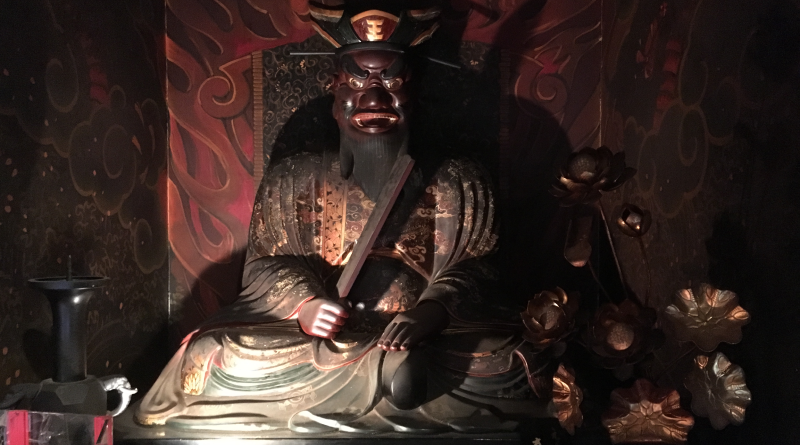
An Overview of Japanese Buddhism and the Afterlife
There is a saying that in Japan one “lives by Shinto and dies by Buddhism.”
It may seems perplexing to outsiders how, or even why the people of Japan practice both Shinto and Buddhism. There are probably many different theories that could serve as answers to this conundrum, but I think the simplest answer is that while Shinto deals with life, Buddhism deal with death.
It is no mystery that my husband and I go to a lot of temples in Japan. In the hopes of offering better insight and appreciation of Japan’s temples, it makes sense to have a grasp of the basic principles of Buddhism in Japan and its perspectives of death and the afterlife.
***I would like to emphasis that this article covers the afterlife as it pertains to Japanese Buddhism. There are many different branches of Buddhism throughout the world, and each has its own slightly different views. Moreover, even within Japanese Buddhism there are different schools of thought that follow their own different interpretations of Buddhism. That being said, the following are the most widely accepted beliefs of what happens to a soul after death within Japanese Buddhism.
Contrasting Shinto, Buddhism, and Death
According to Kojiki, Shintoism has a very vague perception of death. The only description about the afterlife is from the myth when Izanagi saw Izanami in Yomi. Judging from this description, Yomi is a sad place that will contaminate those go there.
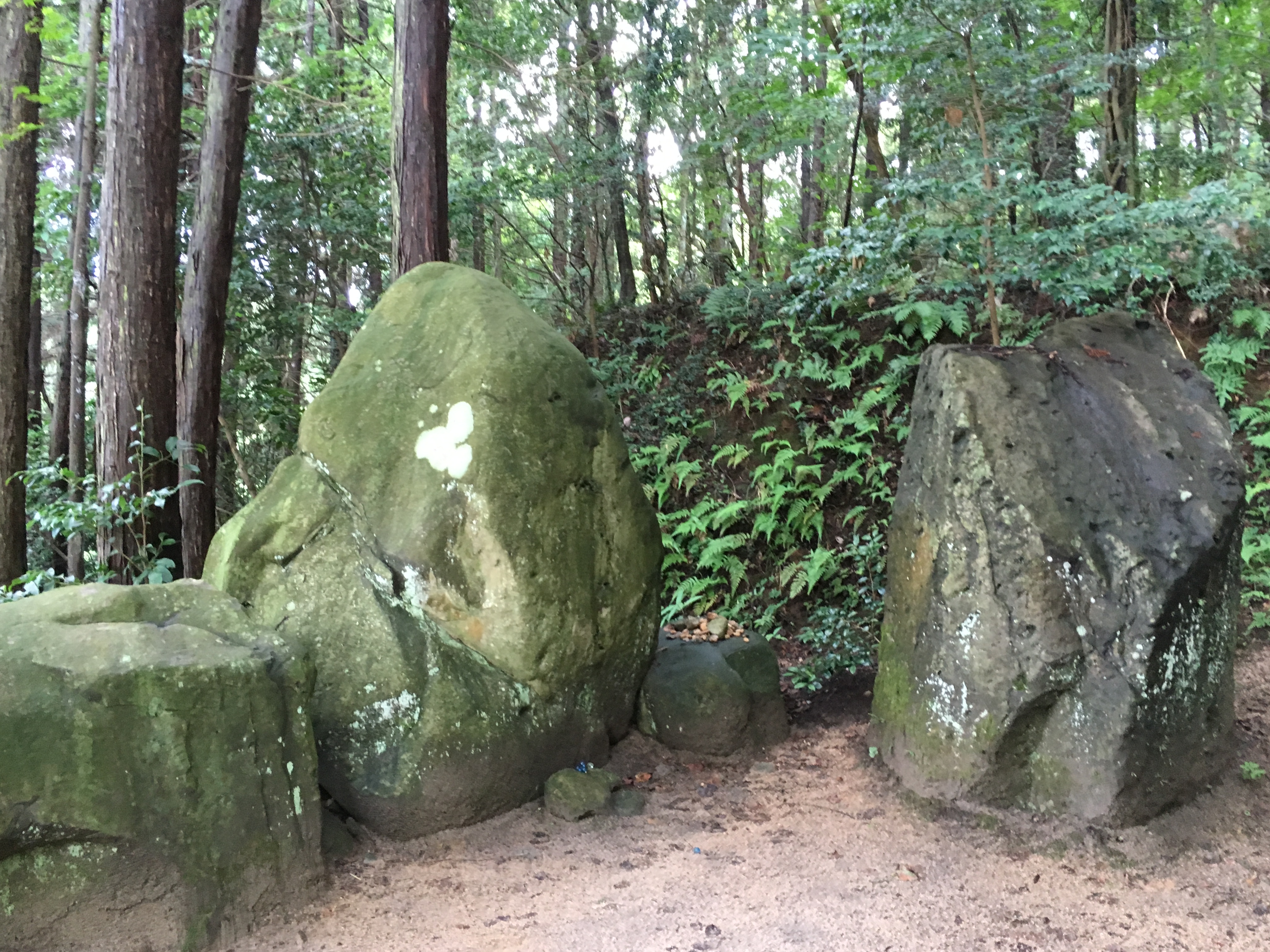
It seem clear then, that Shinto’s focus is on the affairs of this world rather than the next. Nowadays, Shinto priests have started performing burial rites, however, there are still no graveyards in or around Shinto shrines.
On the other hand, Buddhism generally emphasizes not this current life, but rather the one after death. Many Buddhist disciplines, emphasize what happens to us after death and that those who practice Buddhism will be able to find happiness after death.
The Journey to Buddhism’s Underworld: Chuuin [中陰]
When you die, your soul goes on a 49 day trip called chuuin. During this time period, you are neither in the physical world nor the world of dead. Rather, you are between worlds, and are traveling to the world of the dead, called Meido [冥土].
1-6 Days after Death
When you wake up, you will find yourself alone in a dark place. This dark place means you are in the cycle of rebirth [輪廻転生]. You will immediately start the trip to Meido, but the path to Meido is down a very long mountainous road.
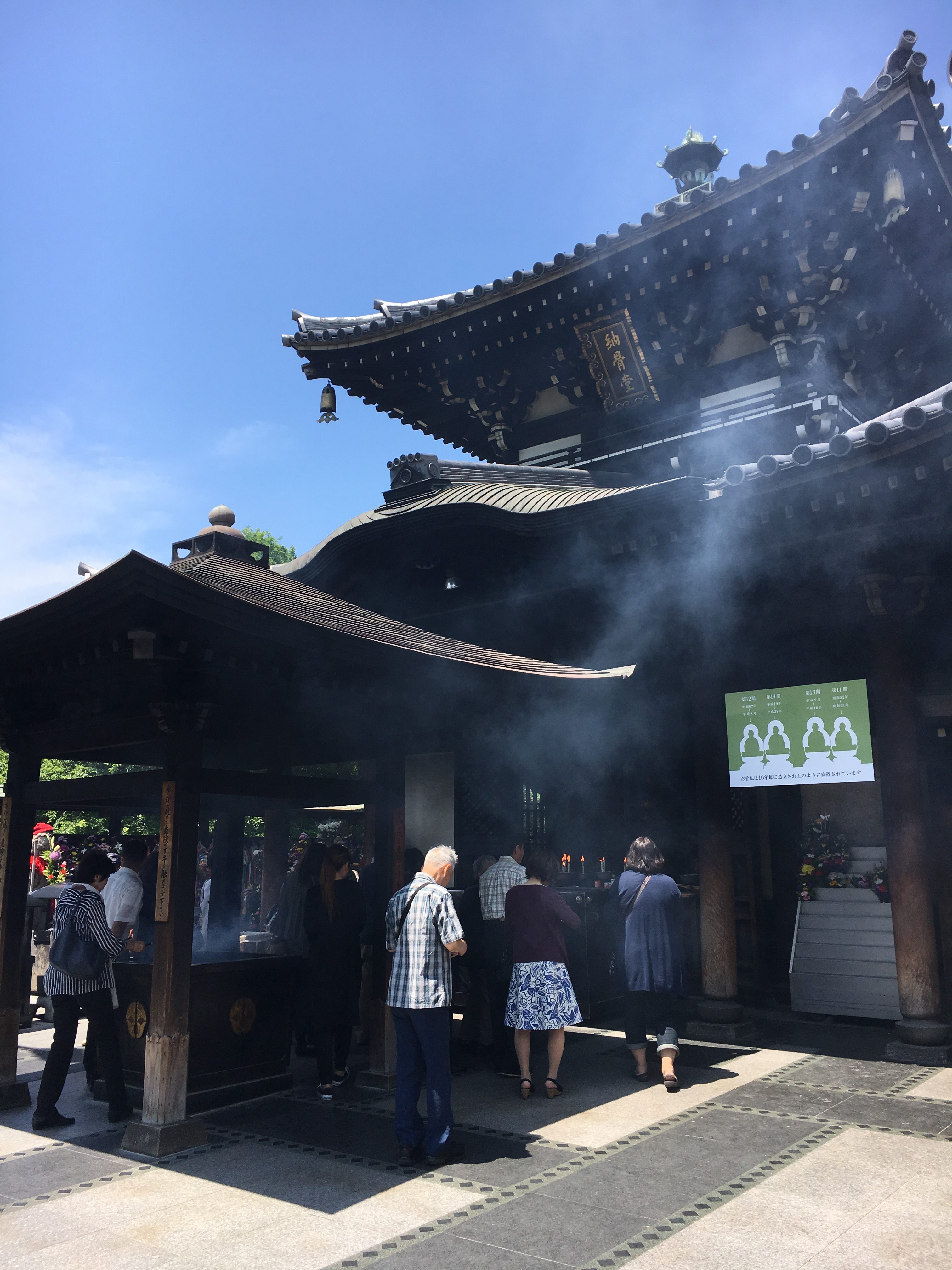
Thought the path is very dark, candle light from the physical world will light your path to Meido. If you become hungry, you will be able to eat the smell of incense. This is why people constantly burn the incense and light candles for 49 days after someone dies.
Crossing the of River Death
Eventually you will see a garden of red spider lilies, a long bridge and a huge river you must cross called the Sanzu River [三途の川].

Before you can cross the river, you will be judged by the first of ten kings. In Buddhism, Ten Kings will judge a person’s soul and determine which life they will be reincarnated into. Of course, you cannot lie to these kings, who essentially already know everything you did in your previous life. They will weight your sins against the good things you did in your life, and judge you accordingly.
The first of these kings is Shinko-ou, who judges whether or not someone has taken a life. This includes all life, from eating meat to swatting flies. Shinko-ou also decides how you must cross the Sanzu River.
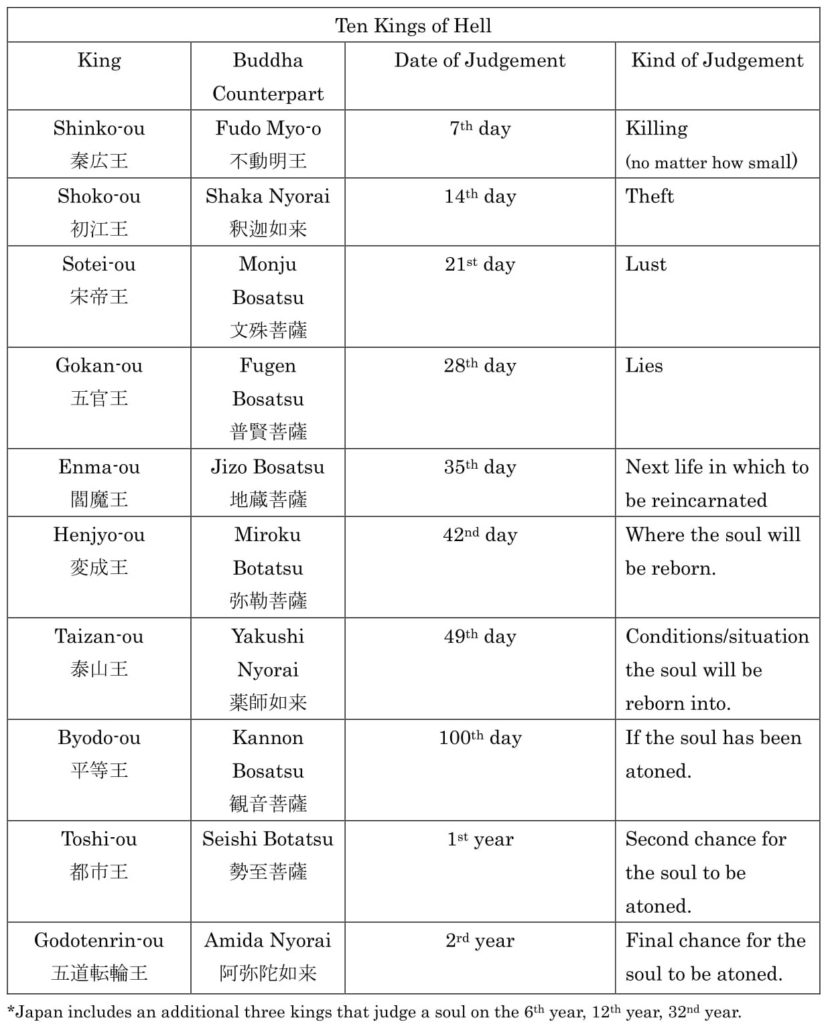
There are three ways you can cross the Sanzu River:
Those who have only committed minor sins, can cross at the shallowest part of the river.
If someone committed many sins, they must cross at the deepest part of the river.
Only people who are exceptionally pure can use the bridge that goes over the river.
Then some time around the Edo Period, people started to believe there was a ferryman who would take you across the Sanzu, regardless of sin– as long as you could pay him. His price? 6 mon. Even today during a funeral, relatives will place a small pouch over the neck of the deceased. Inside the pouch is a piece of white cloth with 6 mon printed on it, so they can pay to cross the river.
Lost Children
Before crossing the river, you will see children pilling up stones on the shore. What are they doing? These are children died before their parents, a big sin in Buddhism. In order to atone for this sin, they must make a tower of stones from the rocks near the Sanzu River. However, unfortunately, oni constantly come and destroy the towers, making their task impossible to complete. Only Jizo Bosatsu [地蔵菩薩] can save these unfortunate children. For this reason Jizo Bosatsu are very popular throughout Japan and are given many offerings, including hats and red bibs to make them appear child-like.

After successfully crossing the bridge, there will be two old people waiting for you: Datsueba [奪衣婆] and Kenneou [懸衣翁]. They will rip off your cloth and hang them on a tree called Eryojyu [衣領樹]. How wet your clothes are will judge how much sin you might have committed.
7 Days After Death
After the 7th day, each king will come and judge your sins once every seven days. Traditionally in the mortal world, your relatives will also have a ceremony for you from the 7th day up until the 49th day. These ceremonies are meant to abate amount the sins the deceased accumulated in life. However, people are very busy these days, and it is common to hold the ceremony for the seventh day on the same day as the funeral, and then to only hold the final ceremony 49 days later.
The Judgement of Enma-ou
After the 35th day, you will meet the most infamous of the Ten Kings, Enma-ou [閻魔王], also called Enma-daiou. He is also the most important because he is the one who decides which of the six worlds you will go to in your next life. Enma-ou has two objects that he uses to asses and judge the souls that come before him: the Jyohari no Kagami [浄玻璃鏡] and the Enma Chou [閻魔帳] . The Jyohari no Kagami is a crystal mirror that shows every sin a person committed in their life and even how those sins affected those around them. All these sins are written down in a large book called the Enma Chou making it impossible to lie. If you do try to lie to Enma-ou he will have an oni rip out your tongue!

After being judged by Enma-ou, two more kings will pass sentence on you: one will assign what you will be in your next life and the other will decide how long that life will be. Finally on the 49th day, you will be reborn as something new and then pass into one of the following six worlds.
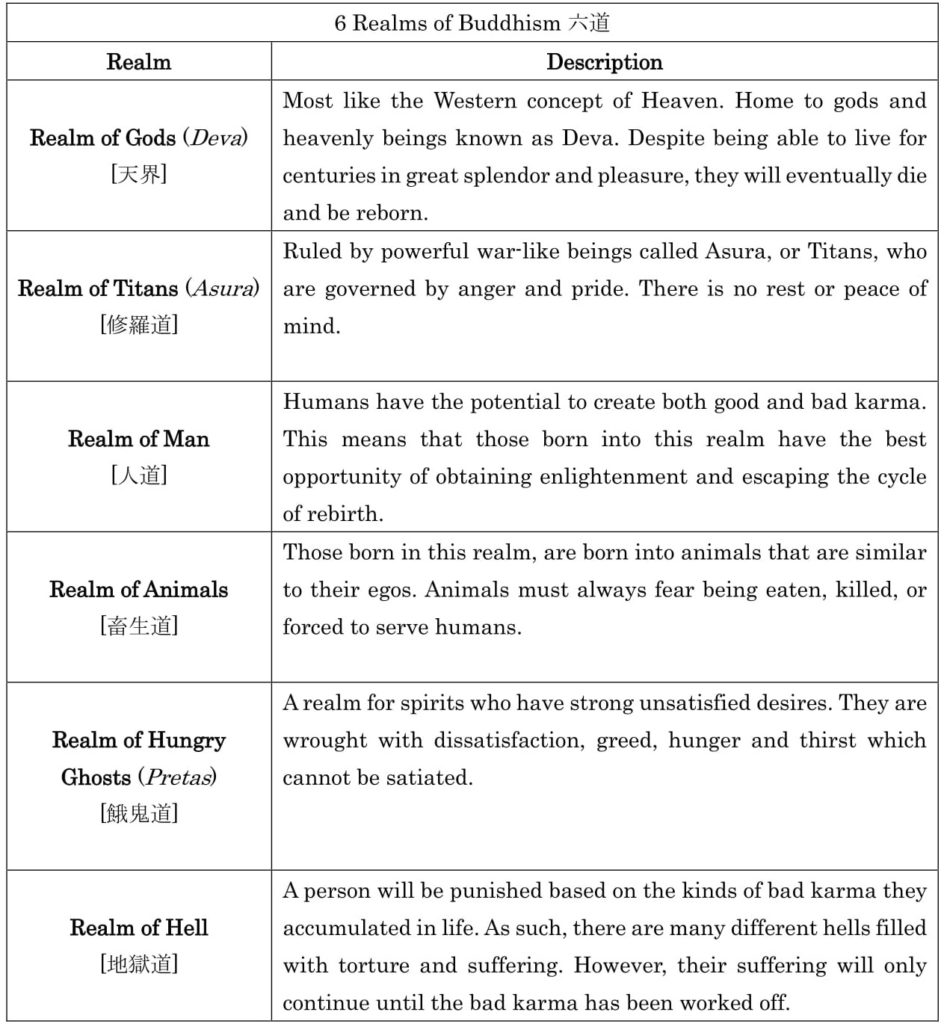
You may go to heaven or you may go to hell, but don’t worry if you go hell. After the 100th day, the 2nd year, and the 3rd year, your soul will be judged again. If you have atoned your sins, you will be allowed to be reborn into a different world.
Is This Heaven?
From the sounds of it, those who get in to heaven are pretty lucky. Unfortunately, heaven isn’t all its cracked up to be either. Just like those who are being punished in hell, so too will be joys of heaven end. In heaven you eventually grow old and it is possible you might still feel dissatisfaction or even unhappiness. After you exhaust the good karma you accumulated in your previous life, you will die and be reborn yet again. This is known as the Cycle of Suffering: no matter which world you go, you will suffer, die, and face judgement over and over again.

So how you get out from this vicious cycle? The answer is gedatsu [解脱], or nirvana as it is more commonly known. Only by liberating yourself from your attachments and desires will you be able to escape the Cycle of Suffering. This is the main purpose of Buddhism and if you attain gedatsu, you can go to the Pure Lands, Gokuraku Jyodo [極楽浄土], and be among enlightened beings like Bosatsu [菩薩] or Nyorai [如来].
A Deeper Understanding
Japan’s temples will probably always be one of its biggest attractions. They are without a doubt beautiful, sometimes massive buildings that are hundreds, or even thousands of years old. Some special temples even contain precious religious relics or statues. Naturally, you don’t have to be Buddhist to appreciate these temples or their contents, however, they are rich in symbolism about Buddhist beliefs. But don’t feel like you need to conduct advanced research. Just understanding a few basic concepts, can really help you to better enjoy your trip to one of Japan’s many temples!
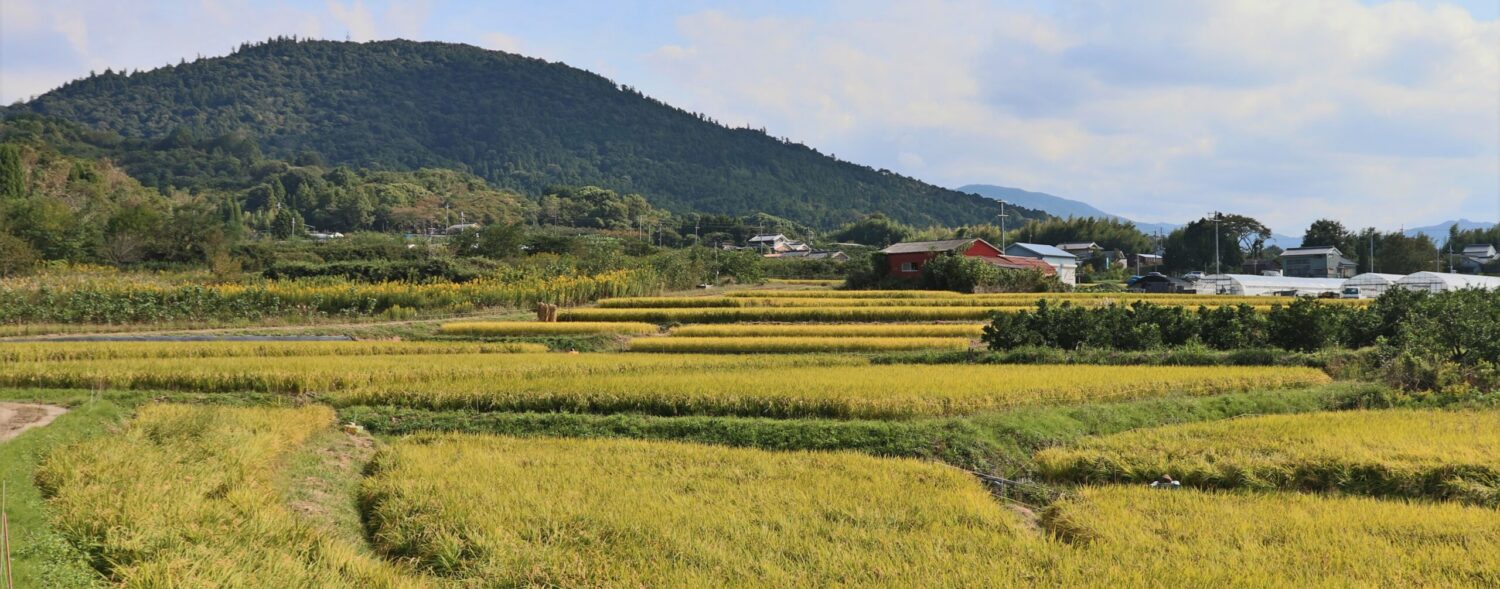
Leave a Reply